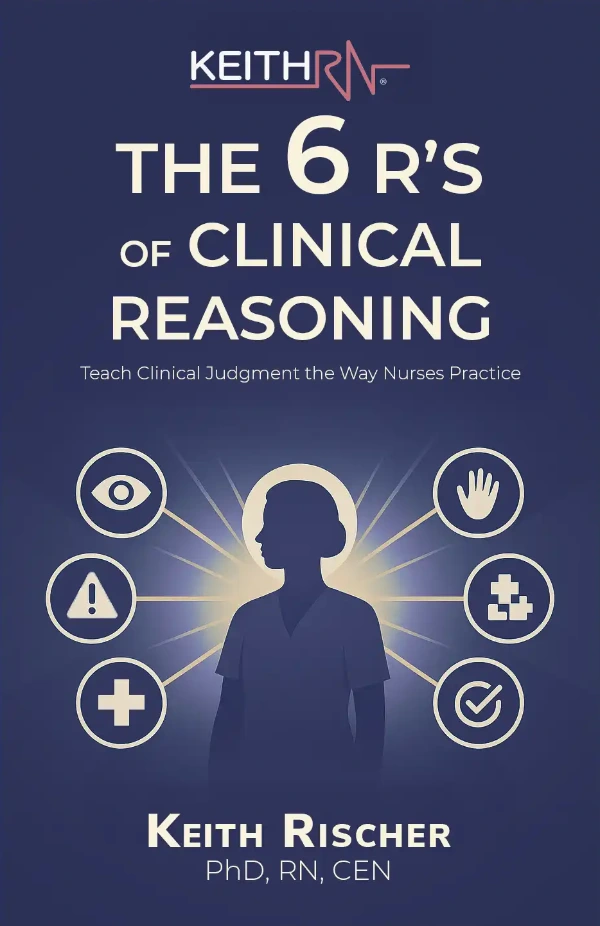
I was precepting a new nurse to critical care recently. This experience reinforced to me that there is ONE THING that must be deeply understood that is foundational to critical and clinical thinking not only in critical care, but in any patient care setting.
Patient care can be likened to a clinical puzzle. Though each piece in a puzzle is unique and separate, it does have a fit and a RELATIONSHIP to another puzzle piece.
In order to put the clinical puzzle together that includes a wide array of clinical data such as lab values, vital signs, assessment data, and medications to manage, there is one thing that every nurse must know DEEPLY…
UNDERSTAND the PATHOPHYSIOLOGY of the primary problem.
Novice nurses, and even experienced nurses who transition to a new role like the nurse I was training from a med/surg floor to ICU will focus and emphasize the TASKS that need to be done at the expense of the higher skill of THINKING (Benner, 1982).
Patricia Benner identified this propensity over 30 years ago in her novice to expert theory of nurse development.
Students must be encouraged to move beyond the tasks to see the big picture and the clinical puzzle that they need to put together.
Let me share why a practical yet DEEP UNDERSTANDING of the pathophysiology of the primary problem is essential.
It will enable any student to recognize three key relationships that will help them see the big picture of each patient they care for and strengthen his/her ability to THINK more like a nurse!
1. RELATIONSHIP between medications ordered and patho of primary problem
The patient that we cared for in critical care had end-stage systolic heart failure due to an ischemic cardiomyopathy and had an ejection fraction of less than 15%. This patient had a Swan Ganz pulmonary artery catheter and was receiving oral lisinopril, metoprolol, furosemide IV and milrinone as a continuous intravenous drip.
This new nurse did not initially have a deep understanding of heart failure and the difference between preload, afterload and the importance of managing and decreasing preload as well is afterload to decrease the workload of the heart.
Once I briefly explained the essence of heart failure and went to my favorite professional website to understand pathophysiology of the primary problem (emedicine.medscape.com) she began to recognize the significance of each of these medications and how they were impacting the right side of the heart by lowering preload (furosemide-milrinone) as well as decreasing afterload (lisinopril-atenolol-milrinone) on the left side of the heart.
This is why the MECHANISM OF ACTION is one of the most important aspects of each medication that every student and nurse must UNDERSTAND as well! See my blog What Every Student Must Understand about Pharmacology for more on this important topic!
This information must not be simply parroted by rote memory but must be UNDERSTOOD in order to develop the higher-level critical and clinical thinking required for safe bedside practice.
Regardless of the clinical setting, the ability to connect these two important dots will also be evident when your students have a deep understanding of the pathophysiology of the primary problem as well as the mechanism of action of the meds they administer.
2. RELATIONSHIP between relevant clinical data and patho of primary problem
The data we collected included the following:
- BP: 142/88
- Pulmonary artery pressure:62/40
- Wedge pressure: 28
- Central venous pressure (CVP) of 12
- Ventricular paced: rate of 70 with occasional ventricular ectopy
- Breath sounds were clear though diminished in the bases and there was one plus pitting edema in the lower extremities.
- Denied shortness of breath at rest and with activity.
Relevant Labs:
Basic metabolic panel:
- Potassium: 4.2
- Sodium: 140
- Creatinine: 1.2.
These lab values were essentially unchanged from yesterday.
These pieces of clinical data also represent a literal puzzle piece whose fit must be recognized in order to put the patient puzzle together. In this scenario of a patient with heart failure, the student must be able to transfer knowledge from the textbook to the bedside to recognize the relevance and significance of the pulmonary artery pressure that is too high, the wedge pressure and the central venous pressure that is elevated.
Though the creatinine is normal, it is an essential piece of clinical data because it reflects the adequacy of perfusion to the kidneys.
Determining Acceptable Ambiguity
Patients do not consistently follow textbook norms. Though a normal pulmonary artery pressure, wedge and CVP are 20/10, 8-12, and 2-6 respectively, the elevated pressures seen in this patient with heart failure are abnormal, but norm for this patient. This is acceptable ambiguity.
Students need to be guided to compare and contrast textbook norms with patient norms to acquire needed experience to make a clinical judgment if the ambiguity seen is acceptable or not.
Clinical reasoning is required to TREND RELEVANT clinical data and determine if the TREND and current patient status is his/her norm or a significant deviation despite abnormal parameters.
3. RELATIONSHIP between patho of primary medical problem and nursing priority
Though this patient was clinically stable, the most commonly used NANDA nursing diagnostic statements for a patient in heart failure typically include “fluid volume excess”, “ineffective tissue perfusion”, or “activity intolerance.”
Due to aggressive medical management these nursing priorities were currently not relevant or a good fit. By using clinical reasoning and simply stating the “essence” of the current clinical situation.
The nursing priority that we used to mange this patient was simply stated as “decrease the workload of the heart”. All that we did medically as well as in caring for this patient centered on this priority.
This patient was also extremely anxious over her need to be in critical care and required empathetic caring and support of her emotional and even spiritual needs.
By recognizing that an ejection fraction of 10-15% is end-stage and considered a terminal prognosis, this knowledge influenced the identification of relevant nursing priorities and even the need to consider addressing spiritual care in a patient who may not have long to live even though she is clinically stable at this time.
How to Strengthen Clinical Instruction
If you are a clinical educator, make it a priority for each student to develop a practical and deep understanding of the pathophysiology of each patient’s primary problem.
Then use these three relationships that relate the pathophysiology to medical management including medications (mechanism of action), clinical data, and the nursing priority.
By communicating this expectation you will be taking an important step for students to not only strengthen learning, but more importantly will prepare them for real-world clinical practice and the critical and clinical thinking that is required to be safe.
These principles emphasize the importance of clinical reasoning to nursing practice. The lack nurse thinking will impact patient safety and can even result in adverse patient outcomes including death when the failure to recognize a problem results in failure to rescue!
What do you think?
How do you currently help students tie the clinical picture together using the pathophysiology of the primary problem? How could you incorporate this emphasis in future clinicals?
Comment below and let the conversation begin!
References
Benner, P. (1982). From novice to expert. American Journal of Nursing, 82(3), 402–407.
Keith Rischer – PhD, RN, CEN
As a nurse with over 35 years of experience who remained in practice as an educator, I’ve witnessed the gap between how nursing is taught and how it is practiced, and I decided to do something about it! Read more…
The Ultimate Solution to Develop Clinical Judgment Skills
KeithRN’s Think Like a Nurse Membership
Access exclusive active learning resources for faculty and students, including KeithRN Case Studies, making it your go-to resource.




